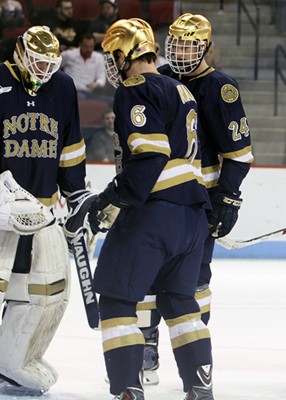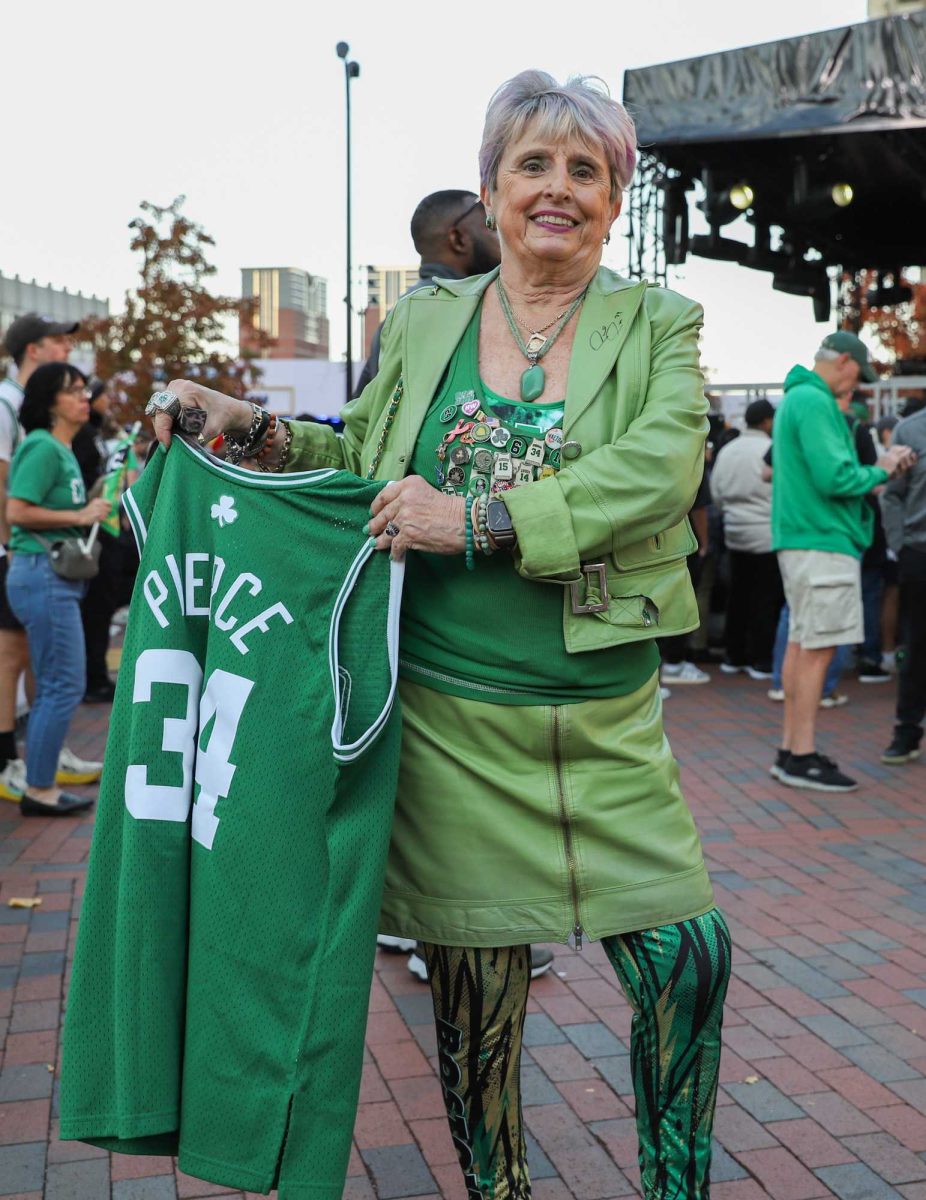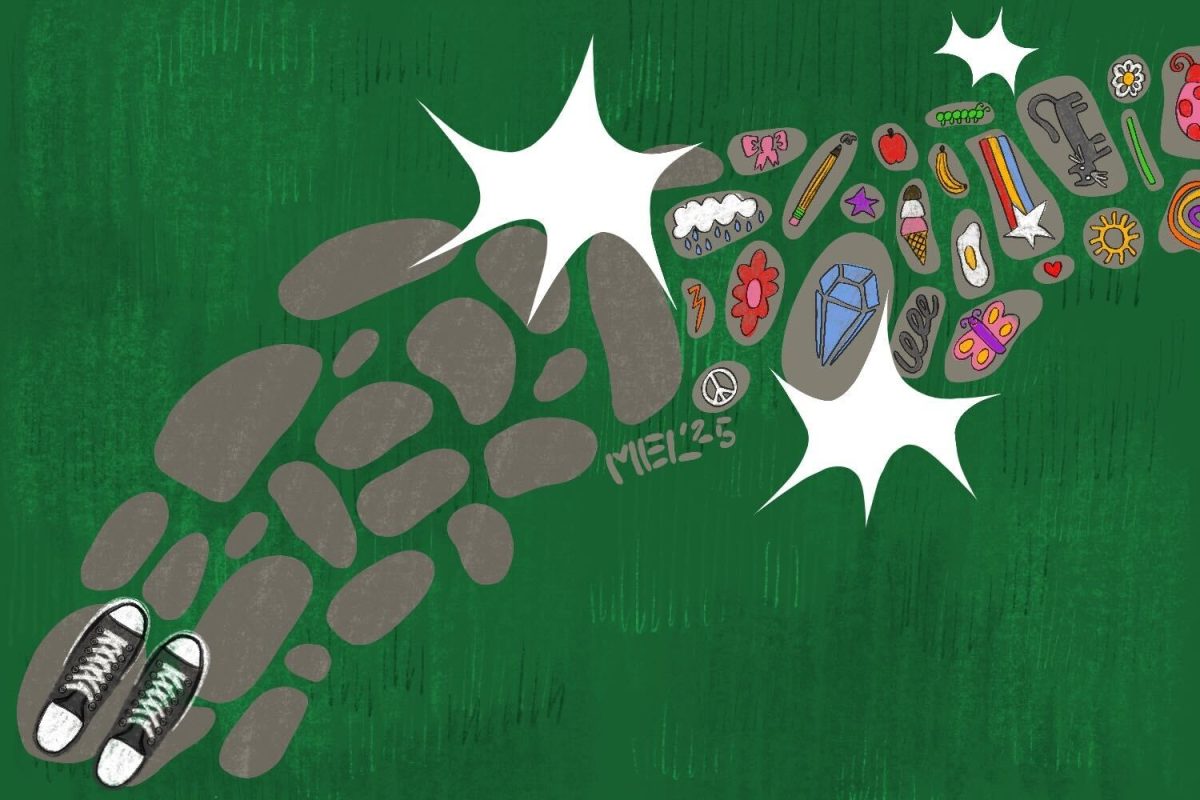
College sports are slowly becoming more and more disorganized. Teams are changing conferences every year, while other schools are petitioning to join conferences that they have no business being a part of at all.
For instance, Boise State University was looking to join the Big East in 2013. And yes, Boise is in Idaho. Why the Big East makes sense? I don’t know.
The same thing recently happened in college hockey. The University of Notre Dame, located in South Bend, Indiana, joined Hockey East in 2013. Notre Dame’s shortest league road trip currently is 802 miles to Hartford, Connecticut. The shortest trip!
So at the conclusion of next season, Notre Dame is reversing what never should have happened and will be leaving the Hockey East to join the Big Ten, a much closer conference. But the move simply makes no sense for the sport.
College hockey is looking to achieve balance by giving each conference an even number of teams. While this is helpful in allowing every team to make their postseason conference tournament every year, the problem is that there is too much geographical disparity in the current college hockey world.
There are some solutions to fixing it, and moving Notre Dame to the Big Ten was not one of them. The Big Ten currently consists of six teams — Ohio State University, Pennsylvania State University, the University of Wisconsin-Madison, the University of Michigan, Michigan State University and the University of Minnesota — all of which are full-time members of the conference. Throwing Notre Dame into the mix makes sense geographically but does little to balance the conference.
What college hockey is reportedly thinking of doing is putting Arizona State University into the Big Ten to make it eight teams, in addition to moving a couple teams around the eastern conferences to make even numbers.
While it would be imperative to even up the trio of eastern college hockey conferences, moving Arizona State to the Big Ten is absolutely asinine. Why would that be a thought? So that the NCAA can take eight brand-name schools and group them together for publicity.
But at the same time, you’re now asking Arizona State to make a road trip to Minnesota, which is ridiculous. Granted, Arizona State isn’t in the greatest location for college hockey, and there is no conference that really makes travel easy. However, one solution can help with balance: the Western Collegiate Hockey Association.
Putting Arizona State in the WCHA would give the young program a chance to compete in one of the weaker conferences in college hockey. The Big Ten would do little to help the program or hockey in the West develop properly.
Another current issue that has yet to be addressed by the NCAA is the moving the United States Air Force Academy out of the Atlantic Hockey Conference. Just because Air Force, a school in Colorado Springs, Colorado, has played in an eastern conference for years doesn’t make it okay to leave things the way they are.
Air Force should also be in the WCHA, where there would be less travel and similar competition for the program.
Since the WCHA is the conference that will set all the dominoes falling in motion, here’s what needs to happen.
The University of Alabama in Huntsville needs to switch places with Air Force and join Atlantic Hockey. There would still be a lot of travel, but much less compared to the annual trips to Alaska, Minnesota and the northern peninsula of Michigan.
Arizona State should join the WCHA as well, becoming the 11th team. The 12th program would be either Western Michigan University or Colorado College. Both schools have had difficulty since joining the elite National Collegiate Hockey Conference and are struggling to find success as of late.
One school, within the next two seasons, could heavily improve. In my opinion, Western Michigan would be the best fit in the WCHA in order to keep the Colorado College and University of Denver rivalry intact.
There are a number of different ways to even up Hockey East. One possibility is Merrimack College leaving the Hockey East to play in Atlantic Hockey, but that will not happen.
Realistically, the College of the Holy Cross could join Hockey East. The Worcester school holds a rivalry with both Boston College and Boston University, and this would limit travel to member schools.
Another possibility could be Quinnipiac University moving to Hockey East. This would cause even more dominoes to fall. The Rochester Institute of Technology would likely move to the Eastern College Athletic Conference, setting even more moves in motion.
There’s clearly a lot that needs to be done in order to balance college hockey both talent-wise and geographically. Regardless, I’m glad to see Notre Dame leaving Hockey East. Those gold helmets were starting to give me a headache.





















































































































Steven Clark • May 4, 2016 at 9:48 am
My most likely possible 8th B1G hockey teams:
1. A current B1G school. The Nebraska Cornhuskers are the only current B1G school which could realistically be ready to join the B1G hockey with Notre Dame, even with a Pegula sized wad of cash dropped on their doorstep tomorrow. Nebraska already has the new John Breslow Ice Hockey Center to practice in, the new Pinnacle Bank Arena for games, and they recently added NCAA women’s beach volleyball for Title IX compliance. The biggest obstacles for Nebraska hockey have already been conquered, and all they need is the green light to raise the funds for scholarships and upgraded equipment. School officials at Nebraska have given no indication they will give that green light any time soon, and the leap from a D3 club team to a D1 varsity team is a large one.
2. Another associate member. The Miami Redhawks are a “Public Ivy” in the current B1G geographic footprint with past hockey rivalries with 3 current B1G hockey schools and Notre Dame and significant annual research endowments.
3. Another non-B1G school makes the D1 hockey leap. This is tricky, because nobody knows which school will be next to win the large D1 hockey start-up donation lottery, but I’ll go with the Iowa State Cyclones. They are a large public land-grant university, members of both the AAU & URA, in the current B1G geographic footprint, natural rivals for both Minnesota & Wisconsin (Badly needed), have good annual research endowments (larger what Rutgers had and about what Maryland had when they joined the B1G), and a very successful D1 club hockey team (with a good women’s hockey club which make the leap at the same time for “Title IX” compliance). They would probably need a new, and larger, arena, but could share with the Iowa Wild AHL team temporarily, and I’ve heard a couple of sources indicate the money needed would be available (from where they didn’t say) if a B1G hockey invite (or Big 12 hockey) was guaranteed.
4. A new full B1G member (My favorite). Adding the Boston University Terriers as the new 15th full member of the B1G. Boston U is a large research intensive private (A private university companion for Northwestern) university with memberships in both the AAU & URA with annual research endowments which would rank about 11th out of the 15 schools. They don’t have men’s football, wrestling, golf, or women’s volleyball teams, where all of the current 14 schools have teams, but do have teams in almost a dozen and a half sports where at least one current B1G school is missing a team. Two of the few sports where they would be the 15th team are men’s & women’s basketball to better match the ACC in the B1G/ACC Challenge at 15 a piece, besides a new full member would need at least one “money” sport (your basketball team can’t be much worse than Rutgers!). Add the Syracuse Orange as a new associate member for the needed 6th women’s hockey (and possibly Buffalo Bulls women’s rowing and/or Stony Brook men’s tennis) in New York and Massachusetts becomes contiguous to the B1G geographic footprint. As an added bonus MIT women’s rowing likely would follow BU from the Patriot League into the B1G. The B1G adds Massachusetts (including the top 10 Boston TV market), starts B1G women’s hockey, and gets a physical presence in the state of New York while paying Boston U about 40% of what other full members get (a full member share minus football-only revenue), which is still likely to be significantly higher than anything they could expect from the Patriot League. Boston U would get a higher profile and more respect locally, nationally, and even internationally. It would instantly be significantly easier for BU to recruit students, athletes, faculty, administrators, research endowment, and donations. Without the B1G, BU has no chance to move to a better athletic conference than the Patriot League, and the only other D1 conference near the B1G’s academic & research status is the Ivy League itself. My guess is it would take less than a day for Boston U to “officially” accept a B1G invite, including signed documents and agreeing to jump through any hoops the B1G requires (likely upgrading men’s baseball & women’s gymnastics club teams to varsity status). Very likely Boston U hockey would hate the move, but have it forced upon them.
Steven Clark • May 4, 2016 at 8:13 am
North Dakota has NO chance for B1G membership. The B1G only takes elite academic & research institutions with large annual research endowments. Considering the 14 full B1G members, its 2 associate members, and only former member:
11 of 13 public schools are “Public Ivies” (Miami Redhawks & Connectcut Huskies)
4 of 4 private schools are “Hidden Ivies” (Colgate Raiders & Boston College Eagles)
15 of 17 are members of the Association of American Universities [AAU] (Boston University Terriers)
17 of 17 are members of the Universities Research Association [URA] (Boston University Terriers, Northeastern University Huskies, & Arizona State University Sun Devils)
Ivy League Schools are not included as they would only leave ECAC Hockey to start Ivy League Hockey.
Only possible exceptions:
Army Black Knights & Air Force Falcons as elite Service Academy schools
Minnesota-Duluth Bulldogs & Nebraska-Omaha Mavericks only if allowed to “Borrow” their flagship institutions credentials
I see no other current D1 hockey schools having ANY chance of getting a B1G hockey invite, and Boston College would laugh in the B1G’s face if invited.
Notre Dame makes perfect sense for the B1G:
A “Hidden Ivy” and URA member with large annual research endowments in the middle of the B1G geographic footprint with past hockey rivalries with 5 of the 6 current B1G hockey schools.
KES • Apr 23, 2016 at 5:31 am
Before the waters muddy again, might be good to consider longer term plans of the ECAC. The Patriot and Ivy leagues are the primary head-to-head competitors of each other in every other sport. Seems there has to be thought of moving Boston U, Army, and Holy Cross to ECAC to join the Ivies and the other Patriot, Colgate. Quinn likely goes East while relative newcomer, Union, and RPI look to move together in order to maintain their rivalry. That would leave 2 historic and important ECAC teams in limbo, Clarkson and St Lawrence. But as the only remaining Div III schools even they might feel the squeeze at some point.
Powers • Apr 22, 2016 at 11:28 am
So if ASU road trips to Minnesota are “ridiculous”, how exactly does joining the WCHA help?
David • Apr 21, 2016 at 6:53 pm
This article is confusing. The NCAA literally has no say in what teams are in what conference, but the entire premise here is that the NCAA is making the wrong moves. So the whole thing makes no sense.
[email protected] • Apr 20, 2016 at 1:18 pm
It is my understanding that several of the smaller WCHA schools’ budgets are stretched with the amount of travel their men’ hockey teams already have to do. Adding ASU to the WCHA will crimp their budgets further.
Personally I would like to see Simon Fraser added to the BIG10 for the near term as it would likely attract a lot of good western Canada players and quickly turn into a decent program. Once more western schools add D1 hockey it would then make sense to develop a ‘Rockies and west of the Rockies’ conference.
For the time being, I think Notre Dame in the BIG10 is a small improvement to an unappealing conference.
Hopefully ASU will be able to make progress as quickly as Penn State did. See http://www.theplayerstribune.com/tommy-olczyk-penn-state-hockey/